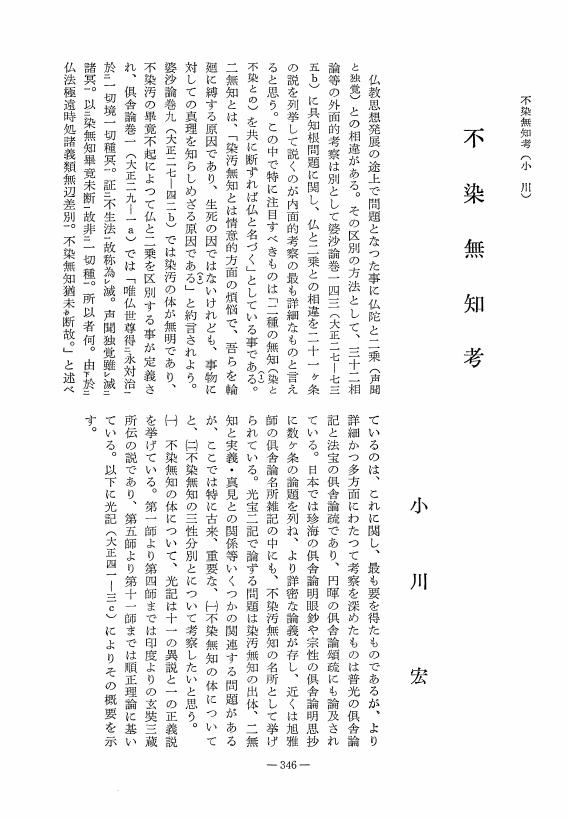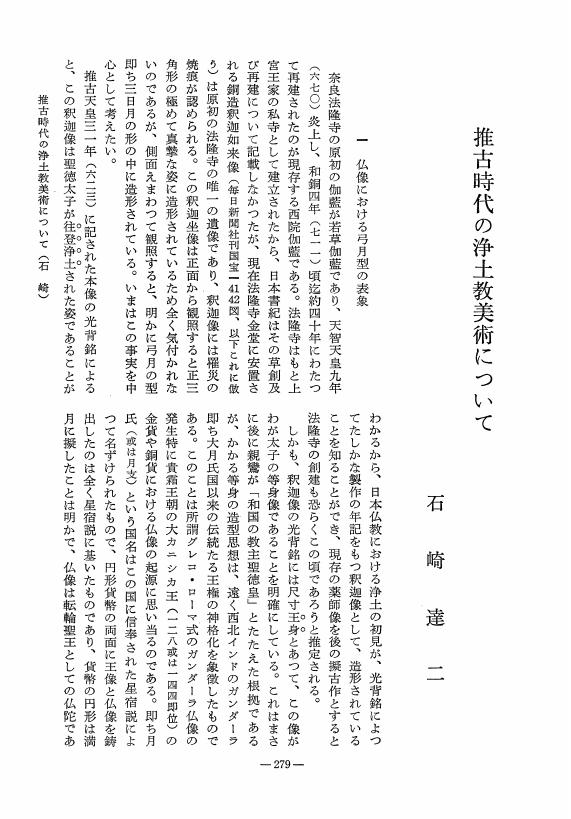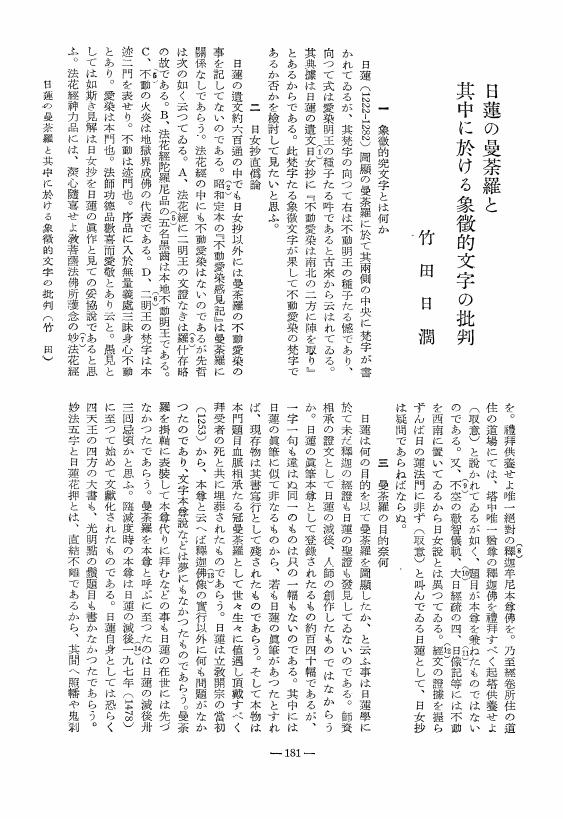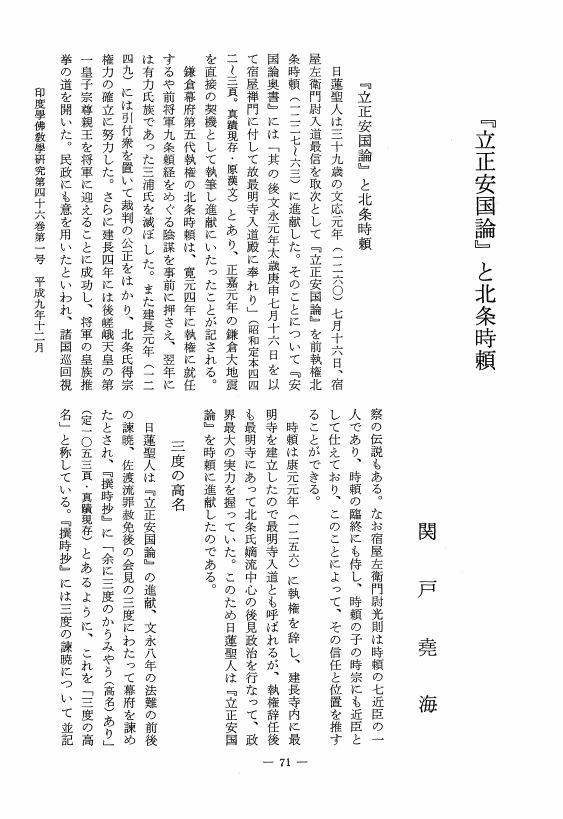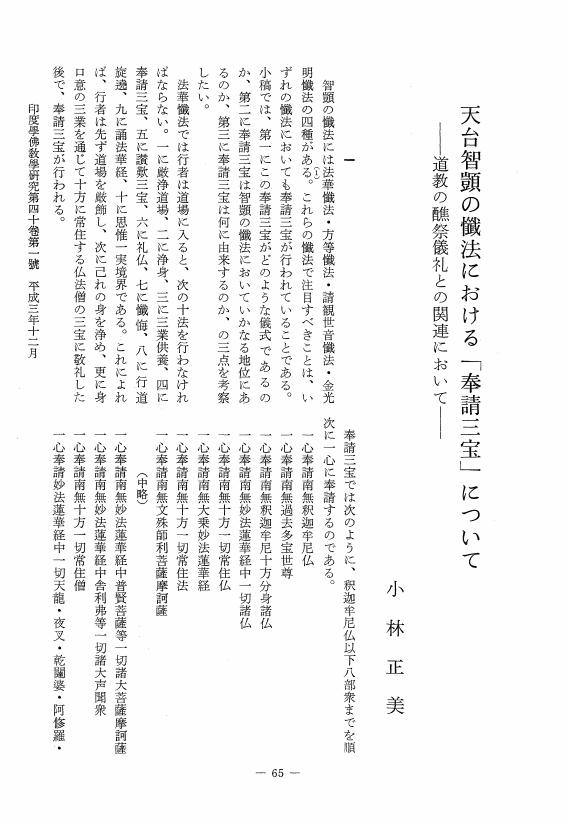1 0 0 0 OA 大乗経典の発達と阿闍世王説話
- 著者
- 平川 彰
- 出版者
- Japanese Association of Indian and Buddhist Studies
- 雑誌
- 印度學佛教學研究 (ISSN:00194344)
- 巻号頁・発行日
- vol.20, no.1, pp.1-12, 1971-12-31 (Released:2010-03-09)
1 0 0 0 OA 施護伝考
- 著者
- 武内 孝善
- 出版者
- Japanese Association of Indian and Buddhist Studies
- 雑誌
- 印度學佛教學研究 (ISSN:00194344)
- 巻号頁・発行日
- vol.24, no.2, pp.798-801, 1976-03-31 (Released:2010-03-09)
1 0 0 0 OA 雷と雹を降らせる儀礼――プリ文献の儀礼文献に関する研究――
- 著者
- 井内 真帆
- 出版者
- 日本印度学仏教学会
- 雑誌
- 印度學佛教學研究 (ISSN:00194344)
- 巻号頁・発行日
- vol.69, no.1, pp.361-357, 2020-12-25 (Released:2021-09-06)
- 参考文献数
- 5
In 2002, around 12,000 folio manuscript pages constituting something like 150 texts were discovered in Phuri, an ancient place in the Gung thang Kingdom, near the northern border of modern Nepal. Details of this discovery have recently been made available to scholars in the catalogue Phu ri Manuscripts (2018, 2 vols.) published by the Tibetan Ancient Books Research Institute, Tibet University. Most of the Phu ri manuscripts are ritual texts, dated between the 10th and 13th centuries, the beginning of the Tibetan period of the second diffusion (phyi dar) or that of fragmentation (sil bu’i skabs).This paper examines the ritual texts in the Phu ri manuscripts, and those bringing down thunder and hail in particular (ser ba dang thog dbab pa’i man ngag, T.P.137); it also considers the transmission of Buddhism to Western Tibet at the beginning of the period of the second diffusion.
1 0 0 0 OA 不染無知考
- 著者
- 小川 宏
- 出版者
- Japanese Association of Indian and Buddhist Studies
- 雑誌
- 印度學佛教學研究 (ISSN:00194344)
- 巻号頁・発行日
- vol.26, no.1, pp.346-349, 1977-12-31 (Released:2010-03-09)
1 0 0 0 OA 推古時代の浄土教美術について
- 著者
- 石崎 達二
- 出版者
- Japanese Association of Indian and Buddhist Studies
- 雑誌
- 印度學佛教學研究 (ISSN:00194344)
- 巻号頁・発行日
- vol.18, no.1, pp.279-282, 1969-12-25 (Released:2010-03-09)
1 0 0 0 OA 日蓮の曼荼羅と其中に於ける象徴的文字の批判
- 著者
- 竹田 日濶
- 出版者
- Japanese Association of Indian and Buddhist Studies
- 雑誌
- 印度學佛教學研究 (ISSN:00194344)
- 巻号頁・発行日
- vol.2, no.1, pp.181-182, 1953-09-30 (Released:2010-03-09)
1 0 0 0 OA 『摩訶止観』病患境の研究 ――中国医学からの一考察-経穴(3)-――
- 著者
- 渡邊 幸江
- 出版者
- 日本印度学仏教学会
- 雑誌
- 印度學佛教學研究 (ISSN:00194344)
- 巻号頁・発行日
- vol.58, no.1, pp.512-509, 2009-12-20 (Released:2017-09-01)
1 0 0 0 OA チェーヤ・スッタの特質
- 著者
- 奥田 清明
- 出版者
- Japanese Association of Indian and Buddhist Studies
- 雑誌
- 印度學佛教學研究 (ISSN:00194344)
- 巻号頁・発行日
- vol.15, no.2, pp.667-671, 1967-03-31 (Released:2010-03-09)
1 0 0 0 OA 高校「倫理」教科書におけるインド仏教-特に部派・大乗-の記述について
- 著者
- 江田 昭道
- 出版者
- 日本印度学仏教学会
- 雑誌
- 印度學佛教學研究 (ISSN:00194344)
- 巻号頁・発行日
- vol.57, no.2, pp.1142-1138, 2009-03-20 (Released:2017-09-01)
1 0 0 0 OA チワンゴンパ spyi-dban-dgon-pa の仮面舞踊劇マニリンドゥについて
- 著者
- 佐々木 隆子
- 出版者
- Japanese Association of Indian and Buddhist Studies
- 雑誌
- 印度學佛教學研究 (ISSN:00194344)
- 巻号頁・発行日
- vol.29, no.2, pp.699-702, 1981-03-31 (Released:2010-03-09)
1 0 0 0 OA 『立正安国論』と北条時頼
- 著者
- 関戸 堯海
- 出版者
- Japanese Association of Indian and Buddhist Studies
- 雑誌
- 印度學佛教學研究 (ISSN:00194344)
- 巻号頁・発行日
- vol.46, no.1, pp.71-76, 1997-12-20 (Released:2010-03-09)
- 参考文献数
- 9
1 0 0 0 OA 選擇集新考
- 著者
- 福井 康順
- 出版者
- Japanese Association of Indian and Buddhist Studies
- 雑誌
- 印度學佛教學研究 (ISSN:00194344)
- 巻号頁・発行日
- vol.10, no.2, pp.405-419, 1962-03-31 (Released:2010-03-09)
1 0 0 0 OA 天台智〓の懺法における「奉請三宝」について -道教の〓祭儀礼との関連において-
- 著者
- 小林 正美
- 出版者
- Japanese Association of Indian and Buddhist Studies
- 雑誌
- 印度學佛教學研究 (ISSN:00194344)
- 巻号頁・発行日
- vol.40, no.1, pp.65-70, 1991-12-20 (Released:2010-03-09)
1 0 0 0 OA 江戸初期の排仏論
- 著者
- 高神 信也
- 出版者
- Japanese Association of Indian and Buddhist Studies
- 雑誌
- 印度學佛教學研究 (ISSN:00194344)
- 巻号頁・発行日
- vol.22, no.2, pp.799-802, 1974-03-31 (Released:2010-03-09)
1 0 0 0 OA FAS禅について
- 著者
- 藤吉 慈海
- 出版者
- Japanese Association of Indian and Buddhist Studies
- 雑誌
- 印度學佛教學研究 (ISSN:00194344)
- 巻号頁・発行日
- vol.25, no.1, pp.43-46, 1976-12-25 (Released:2010-03-09)
- 著者
- Gyana Ratna SRAMAN
- 出版者
- Japanese Association of Indian and Buddhist Studies
- 雑誌
- 印度學佛教學研究 (ISSN:00194344)
- 巻号頁・発行日
- vol.51, no.1, pp.477-474, 2002-12-20 (Released:2010-03-09)
- 被引用文献数
- 1 1
1 0 0 0 OA 本覚思想と神道理論
- 著者
- 田村 芳朗
- 出版者
- Japanese Association of Indian and Buddhist Studies
- 雑誌
- 印度學佛教學研究 (ISSN:00194344)
- 巻号頁・発行日
- vol.28, no.1, pp.61-68, 1979-12-31 (Released:2010-03-09)
1 0 0 0 OA イランの仏教遺跡
- 著者
- 入澤 崇
- 出版者
- 日本印度学仏教学会
- 雑誌
- 印度學佛教學研究 (ISSN:00194344)
- 巻号頁・発行日
- vol.58, no.1, pp.346-339, 2009-12-20 (Released:2017-09-01)
1 0 0 0 OA 『十地経論』の六相解釈
- 著者
- 金 京南
- 出版者
- Japanese Association of Indian and Buddhist Studies
- 雑誌
- 印度學佛教學研究 (ISSN:00194344)
- 巻号頁・発行日
- vol.55, no.2, pp.945-942,1280, 2007-03-20 (Released:2010-07-01)
As is well-known, the Six Characteristics (六相), originating from the Dasabhumika-sutra (DBh), are used as the method of annotation in the DBhV. The purpose of this paper is to clarify the interpretation of the Six Characteristics in the DBhV, specifically focusing on the Fifth Characteristic (vivarta,成相) and the Sixth Characteristic (samvarta, 壊相)by comparing a Tibetan version with a Chinese version.We can find a transfiguration between the equivalent Tibetan and Chinese versions. That is, vivarta and samvarta are translated as 'du ba (to assemble) and rgyas pa (to spread) in the Tibetan version, whereas vivarta translates as evolution(成相) and samvarta translates as destruction (壊相)in the Chinese version. This transfiguration brings a difference in interpretation of vivarta and samvarta in commentaries of the DBhV. Furthermore, misinterpretations of vivarta and samvarta can be seen in current studies of the Six Characteristics due to a use of both versions but a lack of consideration regarding the aforementioned transfiguration.
1 0 0 0 OA 螺髪考
- 著者
- 金 炳悟
- 出版者
- Japanese Association of Indian and Buddhist Studies
- 雑誌
- 印度學佛教學研究 (ISSN:00194344)
- 巻号頁・発行日
- vol.38, no.1, pp.275-277, 1989-12-20 (Released:2010-03-09)


